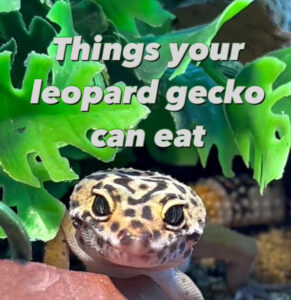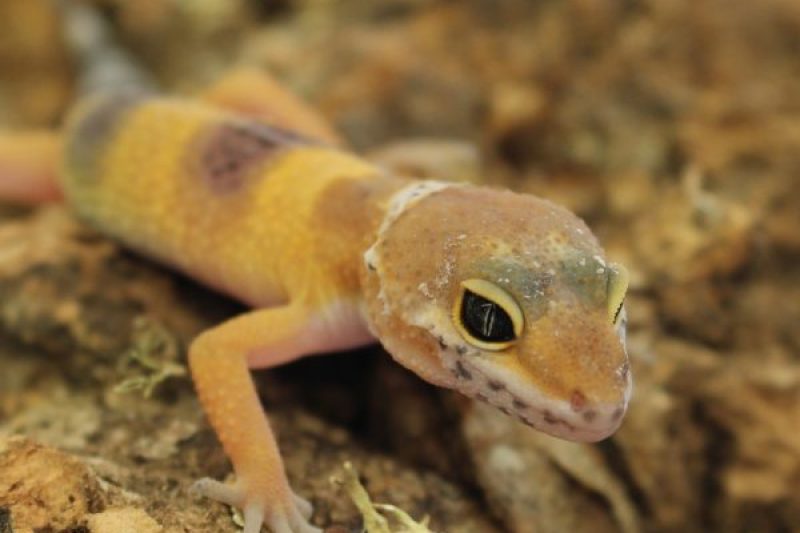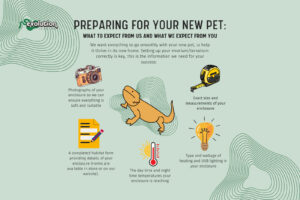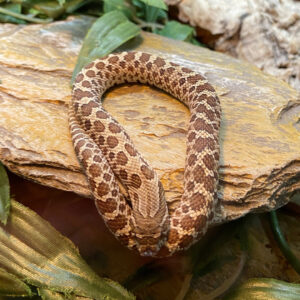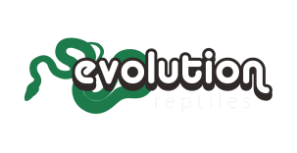These are the classic beginner lizard, and were one of the first reptiles to be bred in many different colours and patterns – known as ‘morphs’. They have been called ‘living art’, and there is a bewildering array of skin colours and patterns available.
They are, however, all the same animal underneath; they are still the same as their wild cousins, and still need all the same things to thrive.
The leopard gecko is found in south-Asian Afghanistan, Pakistan, north-west India and some parts of Iran in dry, arid areas. This includes rocky, dry grasslands, stony deserts, and dry scrubland. The night time temperatures in these areas can drop very low in the winter, going below 10ºc and driving them underground to wait until warmer weather returns, living on the fat stored in their broad tails. When they are above ground, their markings and skin texture camouflage them to escape predators.
They can detach their tails in order to escape predators, a process called autotomy. The detached tail continues to wriggle and jump for up to 30 minutes – a gruesome spectacle, but one which enables the gecko to make good its escape. In captivity the commonest reasons for tail loss are fighting with cage mates, breeding disagreements, and being shut in the vivarium door!
Unlike other species of gecko they have claws instead of adhesive lamellae – the ‘sticky feet’ that enable geckos to run up walls – so although they are excellent at scrambling over rocks and branches, they cannot climb glass or other smooth surfaces. They also have a rather peculiar arrangement for their ears – if you get the right angle, you can look into a leopard gecko’s ear and see light coming in the other side!
They are not, as they are often described, strictly nocturnal (being out at night). They are most active at dawn and dusk, when they will absorb a certain amount of UV through their skin, which helps them to utilise the calcium in their diet. If they need to increase their mineral intake, they will actually eat small pieces of stone or gravel – which is where the substrate eating behaviour comes from that causes so much grief to some captive geckos.
Edward Blyth first described these fascinating little geckos in 1854, and was the first person to give them the scientific name they still bear today. He was, at the time, the curator of the Asiatic Society Of Bengal, but was so poorly paid that he supplemented his income by trading Indian species to collectors both there and in the UK – so it’s entirely possible that the leopard gecko has been in this country for longer than we thought! He also wrote to Charles Darwin on the subject of natural selection, bringing to his attention the paper written by Alfred Russel Wallace on the subject.
There do not appear to be any records of when they first became common in the pet trade, but they were certainly being kept in the seventies and eighties. Most of the leopard geckos we keep today appear to be descended from animals originally collected in Pakistan.
There are five subspecies of leopard gecko, only one of which has a common name – Afghan leopard gecko (Eublepharis macularius afghanicus) – E. m. fasciolatus, E. m. macularius, E. m. montanus, and E. m. smithi. They do turn up in the pet trade occasionally as wild caught animals, but are so very similar to the long established captive bred bloodlines that it’s almost impossible to tell them apart – unless you’re a scientist!
They are still, no matter the taxonomic confusion, excellent pets. Suitable for either the beginner or the more experienced reptile enthusiast, they thrive in both simple and more complex habitats. They do especially well in bioactive setups; although they do like to dig if given the chance, which can make a mess of a carefully planned enclosure!
Despite it often being recommended to keep them in very sparse conditions, if they are provided with a more natural enclosure they will use all of it. They do like to climb and explore, and although we’ve never seen them trying to dig through a slate floor (as bearded dragons will tend to do), if given a substrate that holds its shape they will hollow out their own hiding spaces beneath items of decor.
Their diet is broad, although they are insectivores. Anything that moves is fair game, although in captivity they are mostly fed on mealworms, crickets and locusts. Given the chance, we have found that they prefer locusts – although a healthy leopard gecko will sample any insect placed into its environment. Waxworms are a particular treat, but just like us they can get fixated on food that isn’t terribly good for them long term.
In the wild they will tackle far more dangerous foods; they have been recorded eating scorpions and centipedes, and will almost certainly take any smaller lizards and nestling birds they come across. Although this is their wild diet, we wouldn’t suggest that you try any of these food items for your pet!
Sadly, there is very little information on the conservation status of this species in the wild. Large parts of their natural range are blighted with conflict, and so there are very few scientific studies being carried out. None of the subspecies that live in more stable regions seem to be under any particular threat, although there is always pressure from habitat loss.
If given space, a varied diet and UV lighting these engaging little creatures display a range of behaviour and a personality that makes them very interesting pets; not just a beginner lizard, but a true companion animal.
If you would like to find out more about this or any other reptile, come in and see us at our Kidlington store where we can help you with all your reptile needs. Check out our range of leopard gecko vivarium setups, vivariums, and reptile supplies, or click here to contact our team who are always happy to help. For more information please check out our care hub which features lots of care sheets on commonly kept species of pet reptile.
We look forward to seeing you soon!
